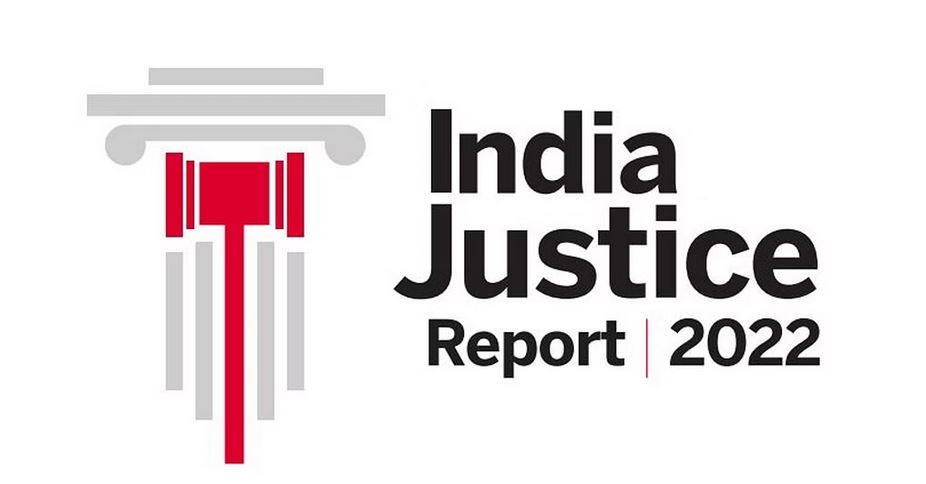Note4Students
From UPSC perspective, the following things are important :
Prelims level: India Justice Report
Mains level: Read the attached story

Central idea: The third India Justice Report, 2022 analyses the changes – both positive and negative – in India’s justice delivery system across four parameters: police, judiciary, prisons and legal aid.
India Justice Report
- The IJR is an initiative of Tata Trusts in collaboration with Centre for Social Justice, Common Cause and Commonwealth Human Rights Initiative among others.
- It was first published in 2019.
|
Below are some of the salient findings of the report – overcrowded prisons, not enough training centres for police personnel, a rising number of pending cases per judge, and more.
Finding
|
Highlights
|
Recommendations
|
| 1. Policing concentrated in urban areas |
- 60% of India’s population lives in rural areas, yet police forces are concentrated largely in urban areas.
- Only six states meet the recommended area coverage of 150 sq. km for a rural police station.
|
- Increase recruitment and training of police personnel in rural areas to ensure adequate coverage.
- Increase police-community engagement and build trust in rural communities.
|
| 2. Police training academies are overloaded |
- India has only 211 training schools and academies for 26.88 lakh police personnel.
- Training across fields cannot be a one-off event for police personnel.
|
- Increase the number of training institutes and the number of personnel trained each year.
- Allocate a larger portion of the police budget to training.
|
| 3. Prison overcrowding is getting worse |
- Prison populations have risen steadily with the number of people admitted to 1,319 prisons during 2021 increasing by 10.8%.
- The average prison in the country has an occupancy rate of 130%. In some states, this number is far worse.
|
- Invest in building new prisons and expanding existing ones.
- Explore alternative forms of punishment and rehabilitation for non-violent offenders.
|
| 4. Number of undertrial prisoners increasing |
- 77% of the incarcerated population comprises undertrials.
- This number has nearly doubled since 2010.
|
- Streamline legal processes to reduce the number of undertrials.
- Increase the use of bail and release on personal recognizance.
|
| 5. Cases pending per judge rising |
- 4.9 Crore cases remain pending across high courts and district courts in the country.
- Many cases have been pending for over 10 years.
|
- Increase the number of judges to reduce the backlog of cases.
- Modernize court processes with technology to streamline proceedings.
|
| 6. Share of women high court judges remains low |
- Between 2020 and 2022, there was a little less than a two percentage point increase in women’s representation in high courts.
- Women account for 35% of the total number of judges at the district court level.
|
- Implement policies to encourage more women to become judges.
- Provide training and support for women judges to advance in their careers.
|
| 7. No state/UT fulfilled all quotas for SC/ST/OBC judges at district court level |
- No state/UT could fully meet all its quotas for Scheduled Castes, Scheduled Tribes, and Other Backward Classes.
|
- Increase recruitment of judges from marginalized communities.
- Implement policies to encourage and support their advancement in the judiciary.
|
| 8. Allocation to legal aid increasing, but no state/UT used its entire budget allocation |
- Over the last two years, the overall allocation for legal services has increased substantially.
- No state/UT used its entire budget allocation for legal aid.
|
- Ensure efficient utilization of resources for legal aid.
- Implement monitoring and evaluation mechanisms to track the impact of legal aid on access to justice.
|
| 9. Implementation of victim compensation schemes remains subpar |
- Implementation of victim compensation schemes “remains subpar.”
- State Legal Aid Service Authorities disposed of only 66% of the 97,037 applications seeking compensation received.
|
- Increase awareness of victim compensation schemes. Improve efficiency in processing and disposing of compensation applications.
- Provide support services for victims, including legal and mental health services.
|
Conclusion
- The report highlights that India’s criminal justice system continues to face a wide range of challenges and shortcomings that need to be addressed to ensure the rule of law and equal access to justice.
- Some of the key areas that require immediate attention include the need for better police training and infrastructure, reducing overcrowding in prisons, and improving the speed and efficiency of the judicial system.
- Additionally, the report calls for greater attention to be paid to the needs of victims of crime, including improving access to legal aid and victim compensation schemes.
- By addressing these challenges, India can move closer to achieving a more equitable and effective criminal justice system.
Get an IAS/IPS ranker as your 1: 1 personal mentor for UPSC 2024
Attend Now


